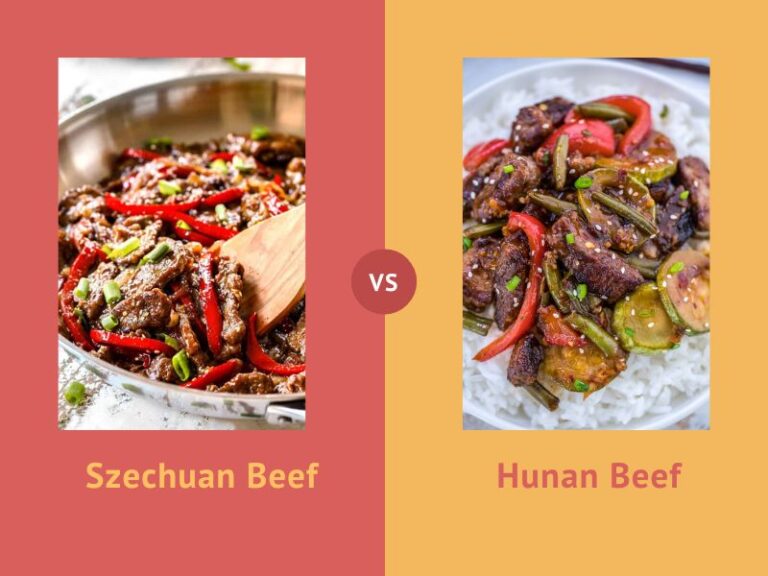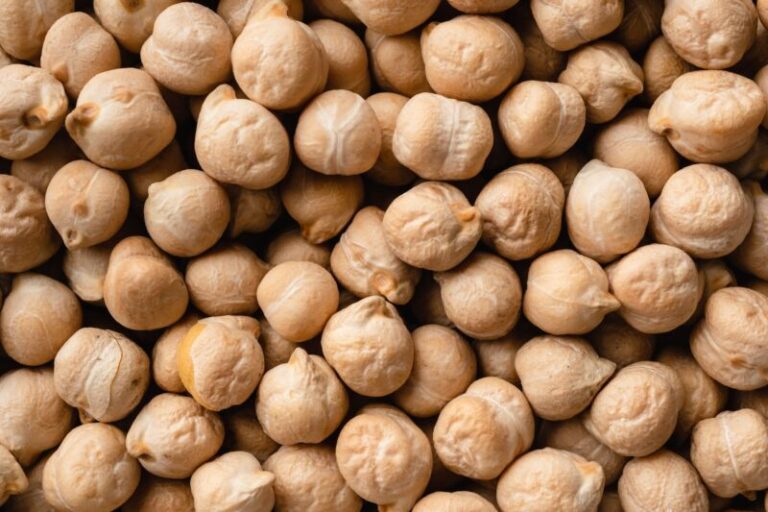The 20+ Fruit That Starts With T
When it comes to fruit, most people think of the usual apples, oranges, and bananas. But there is a whole world of unique and tasty fruit out there starting with the letter T. In this article, I’ll highlight 20+ fruit that starts with T – some you may have heard of, and others that you’ll be eager to seek out and try after reading.
Tangelo
The tangelo is a citrus fruit that is a hybrid between a tangerine and a pomelo (which is a grapefruit-like fruit). Tangelos are round or slightly flattened in shape and generally range from orange to reddish-orange in color.
Tangelos have a sweet and tart flavor that is less acidic than a grapefruit but sharper than an orange. The inside of a tangelo is segmented like other citrus fruit and full of juicy pulp. Tangelos are grown in tropical and subtropical areas like Florida and California.
Tangelos can be enjoyed fresh or used for juice. Their tartness works well in fruit salads, sorbets, and seafood dishes. Tangelos are an excellent source of vitamin C.
Tangerine
Tangerines are a type of mandarin orange and closely related to clementines. They tend to be smaller and flatter than common oranges.
The thin, bright orange rind of a tangerine peels easily. The segments inside contain sweet, juicy flesh with few seeds.
Tangerines originated in Southeast Asia but are now grown worldwide. They are especially popular for snacking and use in salads, relishes, and baked goods. Tangerines contain antioxidants like vitamin C and beta carotene.
Tomato
Though commonly thought of as a vegetable, botanically tomatoes are a fruit. Cherry tomatoes and roma tomatoes are the two most common varieties.
Tomatoes originated in South America but are now grown globally. They can be red, yellow, orange, green, purple, black, or striped. Their flavor ranges from sweet to tangy.
Tomatoes are widely used in savory dishes, sauces, salsas, and salads. When cooked, tomatoes provide great depth of flavor. Raw tomatoes lend a refreshing quality. Tomatoes contain lycopene, an antioxidant that may help reduce risk of some cancers.
Teardrop Tomato
Teardrop tomatoes are a small, heirloom variety that are typically red or yellow in color. As the name implies, they are teardrop-shaped and generally measure about 2 inches long.
Teardrop tomatoes boast an exceptionally sweet and fruity taste. Their pretty shape and vibrant color make them ideal for both savory dishes and uses as a garnish.
When growing teardrop tomatoes, provide support for the vines and water regularly. Harvest when the tomatoes are fully colored but still firm.
Classic Tomato Recipes
Tomatoes lend themselves to so many classic recipes. Here are a few must-try tomato dishes:
- Tomato Basil Soup – Tomato soup flavored with fresh basil and enriched with cream. Top with croutons or grilled cheese.
- Roasted Tomatoes – Oven-roasted cherry or roma tomatoes drizzled with olive oil, balsamic glaze, garlic, and herbs.
- Tomato Sauce – A simple yet versatile sauce made of tomatoes, olive oil, onion, garlic, and basil. Use for pasta, pizza, and more.
- Fried Green Tomatoes – Unripe green tomatoes dipped in buttermilk then fried until crispy and served topped with Southern flavors.
- Caprese Salad – Fresh tomato, mozzarella, and basil stacked together and finished with olive oil and balsamic vinegar.
Tamarillo
Also called the tree tomato, the tamarillo is a small oval fruit grown in subtropical regions including South America, Australia, and New Zealand.
The tamarillo’s flavor is described as a mix between tomatoes and passionfruit. The flesh has a bold, tangy taste. There are red, orange, yellow and purple varieties.
Tamarillos can be used raw or cooked. They work well in chutneys, sauces, and jams. Tamarillos contain vitamin C, potassium and iron.
Tiger Stripe Figs
Tiger stripe figs are a variety of common fig featuring green and yellow striped skin. Inside, the flesh is a deep pink color with a honey-like texture and intensely sweet flavor.
Tiger stripe figs can be enjoyed fresh, dried, or used in desserts. They contain high amounts of antioxidants, fiber, and vitamins. Figs originated in the Mediterranean but are now widely cultivated.
Tamarind
The tamarind is the fruit of a tropical tree widely grown in Asia, India, Africa and Mexico. Tamarind pods contain an edible pulp used to make drinks, sauces, and candies.
Tamarind has a sour yet fruity taste and is an important ingredient in Indian and southeast Asian cuisines. Tamarind pairs well with seafood, duck, chicken and vegetables.
Some health benefits of tamarind include relieving indigestion, promoting heart health, and reducing inflammation. Tamarind is high in B vitamins, iron and magnesium.
Tayberry
A cultivar of the blackberry, tayberries are a cross between blackberries and red raspberries. They are long and conical in shape with a dark purple-red color.
Tayberries have a raspberry-like aroma and intense, fruity flavor described as a mix of their blackberry and raspberry parent fruits. They are excellent for eating fresh, in pies, jams, syrups and more.
Tayberries are relatively easy to grow in moderate climates. Provide plenty of room for the vigorous vines to spread. Tayberries contain vitamin C and other beneficial plant compounds.
Tart Cherry
Not to be confused with sweet cherries, tart cherries are more sour and better suited for cooking than eating raw. Popular varieties include Montmorency and Balaton.
Tart cherries work great in baked desserts, jam, chutney, juice and sauce. Their bright red color adds festive flair. Dried tart cherries can be used like raisins.
Tart cherries contain melatonin and antioxidants linked to reduced muscle soreness and heart health benefits. Most tart cherries are grown in Michigan.
Topaz Apple
A cross between Golden Delicious and Splendour apples, the Topaz apple is a medium to large fruit with a yellow skin blushed with orange or red. The flesh inside is cream-colored and crisp with mild, sweet flavor.
Topaz apples are good for eating fresh or using in salads, sauce, baking and more. They hold their shape well when cooked. Topaz apples contain vitamin C and fiber.
Tangor
A tangor is a citrus fruit hybrid between a tangerine and an orange. Tangors are typically round in shape with orange-red peels and an aromatic, tart-sweet flavor.
Tangors can be enjoyed out of hand, in fruit salads, and juiced. Their popularity has grown in recent years. Tangors contain vitamin C, potassium, vitamin A and flavonoids.
Main producers of tangors include Australia, South Africa, California and Florida. Some common tangor varieties include Ortanique, Temple, and Afourer.
Thimbleberry
Despite the name, thimbleberries are not a type of berry but a relative of the raspberry. Thimbleberry plants produce small fruits with a deep red color and seeds on their surface.
Thimbleberries have a mild, sweet flavor similar to wild raspberries. They are delicate and best eaten fresh off the bush. Thimbleberries grow in the wild across northern North America.
Thimbleberries can be made into jam but are too seedy and soft for most baked goods. They have a short growing season, usually ripening in July.
Tachibana Orange
A specialty variety from Japan, the Tachibana orange has a thin, bumpy peel that makes it easy to peel. The flesh inside is sweet and juicy.
In Japan, Tachibana oranges are a delicacy often given as gifts during the holidays. The oranges represent good fortune and happiness.
Tachibana oranges work nicely in salads, marmalade and desserts. They contain vitamin C, potassium and antioxidants. Tachibana oranges are not widely exported outside of Asia.
Toronja
A large citrus fruit mainly found in Latin America and Southeast Asia, the toronja is similar to a yellow grapefruit but generally larger in size. It has a thick, pale yellow rind and segmented flesh that is juicy and tart-sweet.
The toronja can be eaten raw, juiced, or used in savory recipes. The rind is often candied or pickled. Toronjas contain vitamin C, potassium and other beneficial nutrients.
Texas Persimmon
Native to Texas, the Texas persimmon looks like a small common persimmon with an oblong shape and smooth, dark brown skin. When ripe, the inside pulp is sweet and jelly-like with an almost caramelized flavor.
Texas persimmons were eaten and utilized by Native Americans. Today they are mostly foraged and eaten right off the tree. They also work nicely in breads, jelly, and desserts.
Ripening in fall, Texas persimmons have limited commercial production. Seek them out at farmers markets when in season.
Texas Gold Pear
A russet-skinned pear native to Texas Hill Country, Texas gold pears have dense, juicy flesh and a rich, spicy-sweet flavor reminiscent of honey and nuts.
Texas gold pears are good for snacking and using in desserts. Their growing range is limited so they can be hard to find outside of Texas.
Tarap Fruit
Native to South America, tarap fruit comes from the peach palm tree. Also called coquito, the tarap fruit is oval-shaped and about the size of a plum, with smooth, thin skin that varies in color from purple-brown to black.
Tarap fruits have a single large seed and juicy pulp that tastes like peach, pineapple and coconut. Tarap is enjoyed on its own, in fruit salads, juices and ice cream.
Tommy Atkins Mango
One of the most widely grown commercial mangoes, Tommy Atkins mangoes have firm, golden orange flesh with a sweet and mild tropical flavor. Their peel is thick and turns yellow-red when ripe.
Tommy Atkins mangoes work great in smoothies, salsas, chutneys and desserts. They are available year-round with peak seasons in spring and summer.
Tomatillo
Resembling small green tomatoes, tomatillos are actually part of the nightshade family. Their papery outer husk splits to reveal a tart, citrusy flesh that varies from green to purple-brown.
Tomatillos are a key ingredient in many Latin American dishes like salsa verde, enchiladas, and posole. Remove the husk before eating raw or cooking.
Tompkins King Apple
Developed in New Jersey, Tompkins King apples are large with red striping over a yellow background. The flesh is creamy white and crisp with a balanced, sweet-tart taste.
Tompkins King apples are best enjoyed fresh and hold their shape nicely when baked. Their season is relatively short from late September to October.
Torpedo Melon
Named for its unique, oblong torpedo shape, the torpedo melon originated in Armenia and Turkey. It has smooth, bright green skin and crisp, pale green flesh with a sweet, aromatic flavor.
At its peak ripeness, the torpedo melon’s aroma is said to fill a room. It is an excellent melon for eating fresh and including in fruit salads.
Taylor’s Gold Pear
This yellow-green, russet-skinned pear has dense, juicy flesh with a rich, spicy-sweet flavor and hint of citrus. It was discovered as a chance seedling on a homestead in southern Oregon.
Taylor’s gold pears are good for fresh eating, baking and poaching. Their delicate flavor is a nice change from everyday pears. Availability is limited outside the Pacific Northwest.
Conclusion
Hopefully this article has opened your eyes to the diverse world of fruit starting with the letter T. From tropical mangoes and figs to hardy apples and berries, there are so many unique flavors and textures to experience. Seek out some locally grown varieties or discover new tropical fruit on your next vacation. My mouth is watering just thinking about all these tasty treats!






